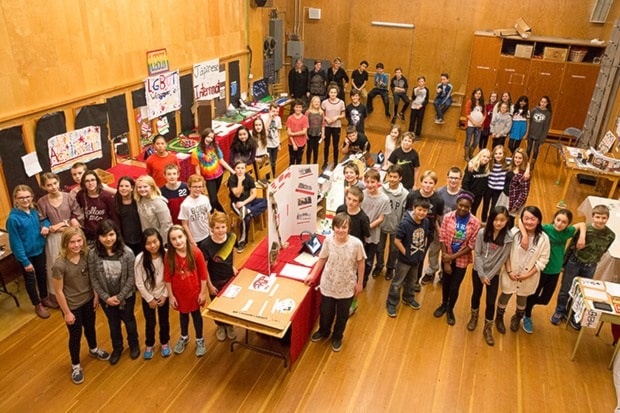Students at Lansdowne middle school received a real eye opener when they were tasked with making a museum for marginalized groups.
Two Grade 7 classes learned a lot about women’s rights, residential schools, Japanese internment camps, the Chinese head tax, the Acadian expulsion and LGBTQ issues as they developed exhibits for their museum, held Dec. 7 and 8 at the school. Teacher Kerry Quinn got the idea for the nine-week project after reading through the Truth and Reconciliation report this past summer for her own personal knowledge and awareness as a Candian.
“I started to think about how I hadn’t learned about residential schools until I was at UVic,” she said. “I thought, that’s a long time that I was living in this country and not knowing this really dark, important chapter of our history.
“I felt really convicted all of a sudden because I realized I’d never taught my students about it, and I started to feel that I have a huge responsibility to tell those stories.”
Quinn discussed her idea with fellow teacher Catherine Beaulac, and together, they developed the museum project among their Grade 7 social studies classes.
For six weeks, the students studied different topics about oppression through class research and presentations from guest speakers. Some of the topics, such as the treatment of First Nations in residential schools, caught the students off guard.
“I think a lot of them were really surprised because they weren’t the proud parts of Canadian history we often talk about,” said Quinn, noting students were taken aback knowing the last residential school closed in 1996, not even 20 years ago.
After the six weeks, the classes visited the Royal B.C. Museum, where they learned about curation, artifacts and the behind-the-scenes components of running a museum.
The students later split up into groups and selected a topic, spending about three weeks putting together their exhibits. Many of the students constructed dioramas, posters, interactive games and multimedia using tablets and smartphones.
Quinn said the students responded well to the museum project, adding she hopes to continue teaching it to future classes.
“They seemed really interested and really engaged,” she said of the students. “In another year, we’d like to include more groups, especially now with what’s happening in current events, thinking about Canada’s response to refugees.
jacob.zinn@saanichnews.com
